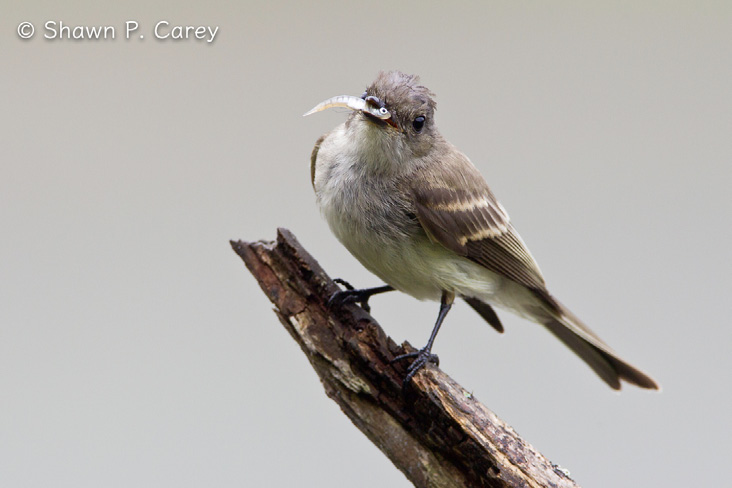Shawn Carey, Migration Productions

Eastern Phoebe. Photograph by Shawn P. Carey.
For the past 20 years, I have spent a week or two during the summer on Cape Cod, usually in Wellfleet or Truro. For many years, I have taught a nature photography class for the Summer Field School at Mass Audubon’s Wellfleet Bay Wildlife Sanctuary. It is one of my favorite Audubon properties, where I have seen and photographed many interesting subjects including Peregrine Falcon, Belted Kingfisher, Green Heron, Eastern Box Turtle, Fowler’s Toad, and Spadefoot Toad, to name just a few.
In August 2011, I witnessed something that I had never seen or heard of before. While sitting in the small observation blind that overlooks Goose Pond, I watched as a first-year Eastern Phoebe flew from a perch down to the ground multiple times and caught some very small fish as if it were a kingfisher. At first, I was stunned by what I was watching, but I managed to get a few photos of this unusual feeding behavior.
The young phoebe was able to catch these small fish because by early August, Goose Pond had lost most of its water, and all that remained were a few meager stream-like areas that could support only the smallest of fish. The rest of the pond was either dried out or a mushy mix of mud and wet sand. However, these few pockets of water were just enough to supply the Eastern Phoebe with the opportunity—at least that day—to pick off a few fish and pretend it was a flashy kingfisher. This went on for about 45 minutes as the phoebe darted from its perch to the ground and back again, most times missing its target. But on few occasions, it did nab a fish and fly back to the same perch, as phoebes tend to do. After a quick shake of its prey it would swallow the fish whole. To me, this seemed like a rather large prey item for a phoebe. Needless to say, I was thrilled to be able to document this unusual feeding behavior, and I shared my experience with several people, including the late Betty Anderson, who was most interested in what I had witnessed—so much so that she went on to do some research on Eastern Phoebes catching and eating small fish that she later shared with me. So now every time I see a phoebe near any body of water, I look to see whether that bird is possibly catching fish.
